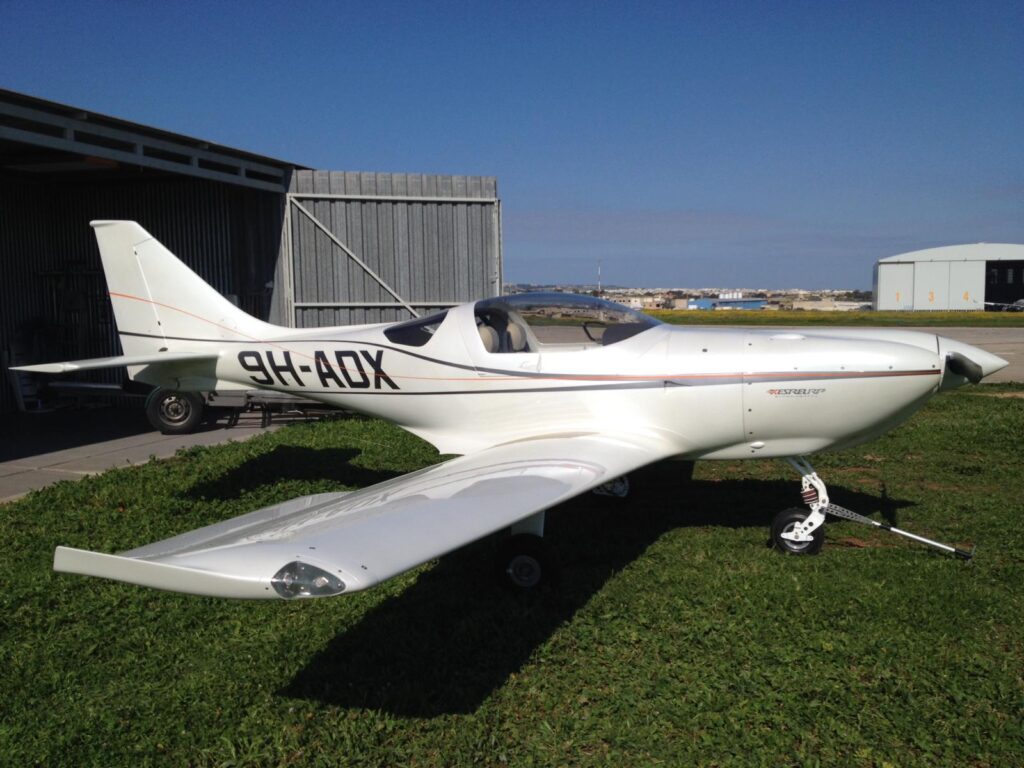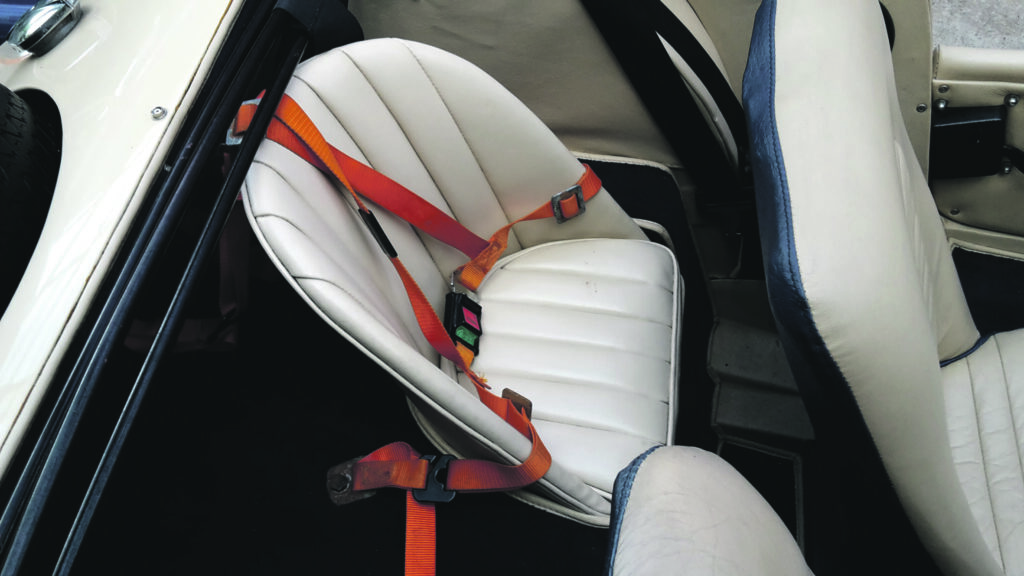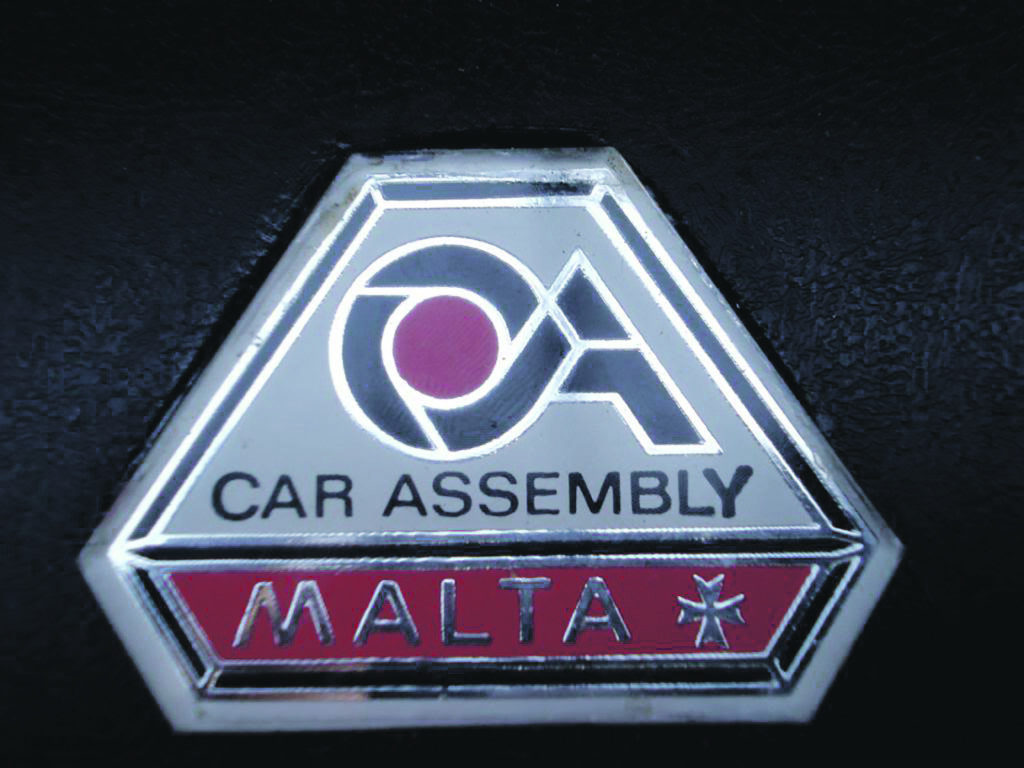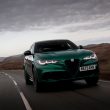Reno Psaila’s love of art and design makes his Morgan 4/4 the perfect purchase, says JOSEPH BUSUTTIL from the Old Motors Club.
In the past, prestige cars were handmade, individualised and incorporating old fashion material like solid wood. They were expensive, and waiting lists sometimes ran into years. But they were special vehicles, made for special people.
One such manufacturer was the Morgan Motor Company, a family-owed firm that started building – and still does – iconic British sports cars, blending craft, heritage and driving experience. Set up by Henry Morgan in 1909, it started with three-wheelers or cycle cars, and then moved to four-wheelers in 1936 with the Morgan 4+4, later changed to 4/4, a model that is still in production today.
Reno Psaila owns a Morgan 4/4, built in 1986.
“I bought it a couple of years ago, but actually it was not my idea originally,” he explains. “As a young girl of eight, my wife Vivienne had accompanied her father to a motor show at Earls’ Court in London, and there fell in love with the Morgan in British Racing Green. To cement this love, she was given a balloon, sadly sucked away in the underground. A few years ago, her souvenirs from a London trip consisted of just Morgan memorabilia. A woman’s subtle hint, one might ask? Anyhow, when my garage became empty after I had finished a long-term aviation project and the empty nest syndrome had firmly set in, I started looking at vintage sports cars and the wife suggested that I should buy a Morgan.”

Psaila found a Morgan 4/4 model in the suburb of Cheadle Hulme, Cheshire. It was in a very good condition, needing little attention – a key factor which helped him decide to buy it, as he did not want to spend too much time on some nut-and-bolt restoration project.
However, being a perfectionist, as well as a jack of all trades, he carried out small improvements, like designing and handcrafting a period-style steering wheel, fabricating the walnut veneered wooden door trims, and stripping the foot wells, front sub-frame, suspension and rear differential, and repainting them.
The Morgan 4/4 is the longest-running production car in the world, and has seen many engine changes over the years. Psaila’s model has a Ford CVH 1600 engine. Its factory original colour was blue, but in 1999/2000 while in Jersey it underwent some restoration work and was painted in a two-tone cream and royal blue finish. A unique feature that Psaila points out is a cute little baby seat behind the passenger seat, installed by a former owner who being a mother, used the car frequently with her baby in tow.

Besides the handwork, the Morgan is admired, among other things, for its sleek lines and sporty design, features that have not failed to impress and influence Psaila, who has art and design running in his veins. Attracted to fast vehicles like the Ford GT 40 or the Porsche 908 and 917 seen in magazines from an early age, he soon started to sketch his own cars. As we talk, he shows me a number of pencil and pen designs of sleek sports cars from those early teenage years, profiles that were well before their time.
While at the Ħamrun Lyceum, his art teacher, the late Esprit Barthet observed and consequently nurtured his talents and helped him find his first work in 1969 after finishing school, aged 16, working as a draughtsman in the interior design studio of his friend, mural artist and fine art painter Frank Portelli. Here he learned the ropes of technical drawing for interior design at a time of a revolutionary refurbishment of local entertainment and commercial premises.
Two years later, he changed companies, and started to work as a graphic designer with an advertising agency, rising to art director within a couple years. In his spare time, he continued to sketch sporty car concepts, dreaming that one day, a couple of designs might jump from the drawing board onto the road.
Psaila’s determination to see such a development finally came to fruition. At the Lyceum, he had a bosom buddy, Joe Baldacchino, whose father Francis had introduced fibre glass in Malta. He became close to the family, especially with another son, Freddie. Together, Psaila with his design and Baldacchino with his fibreglass skills, managed to produce the first Maltese street buggy called the Rhino Bug. The design was turned into a plug, mould, and then a monocoque fibreglass shell, and mounted onto a Volkswagen Beetle platform incorporating the same bolting points, and VW engine and running gear.

Two models were produced, the four-seater Rhino Bug 1 with a high roll bar and an exposed rear engine, and the Rhino Bug 11, a hybrid buggy and 2 + 2 sports car with a lower roll bar.
Working from a small garage in Luqa, they produced 25 buggies between 1971 and 1978. The 2+2 classified vehicle was technically safe and financially feasible, and demonstrated the ingenuity, resourcefulness and talent of local craftsmen. But unfortunately the Rhino Bug did not have official authorisation for manufacture, and eventually production had to close down.
Psaila had also designed the Oner, a mid-range engine sports car to compete with the likes of Lotus Europa, but unlike the Rhino Bug, it never saw the light of day.
As fate would have it, he won a four-week scholarship to improve his French language skills in Strasbourg, and prior to leaving Malta armed with his car sketches, photographs of the Rhino Bug and the scale model of the Oner, he contacted Peugeot to see whether they could take him on for a short-term apprenticeship in their design department.

“My plan worked, up to a certain extent,” he says. “I was given the opportunity to work with Peugeot, but I found out that the coachwork design was made off-site by Italian designers, while the French team looked at the interior styling. Moreover, the French staff were just given a brief by their chief designer, then went back to their cubicles to work alone. There was no teamwork, discussion or feedback – definitely not my cup of tea – and so I returned to Malta and my job at the advertising agency.”
His work at the agency included the portfolio of the Malta Car Assembly, and it was a bonus for him to harness his design skills on the campaigns of locally assembled cars like the Mini, Marina, Triumph Spitfire, Hillman Hunter and others. More creative designs from that era, both of his work as well as of his own fantastic futuristic vehicles, are laid out in front of me. His passion for car design drove him to sketch a new mid-engine Mini based sports car, but before he could take it further, the death knell had started to ring for the Malta Car Assembly, which eventually closed down.
In 1976 he left the advertising agency to open a graphic design studio in partnership with journalist Godfrey Grima. Less than two years later, he branched out on his own, operating his own studio for 40 years.
“I have two sons, Kirk and Dirk, both good at designing, who I did not encourage to follow in my footsteps in graphic design. The eldest Kirk, has his own interior design and turnkey company, and the youngest, Dirk, is an architect. I could feel way back in the 1990s that the digital age would lead to an overcrowded graphic design market.”

Psaila laments that career-wise, his own father was not so open minded with him.
“As a boy, I was also fascinated by planes, and was constantly assembling Airfix warplanes. At 14, I built a radio-controlled aircraft. At 16, I applied to join the Royal Navy as a pilot cadet but being under age, my father had to endorse and sign the papers, which he flatly refused to do.”
With the passage of time, he went back to radio-controlled model aircraft, buying a couple of kits, then designing his own.
His fascination with flying led him to get, after groundwork in Malta and a course in the US, a private pilot licence in 1984. In the US, he saw some home built aircraft which could be either produced after purchasing plans, or assembled from kits. Psaila took this further, designing and single-handedly building his own two-seater light aircraft, the RP-Kestrel, in composite materials. This project took him over 25 years to complete in his free time.
“Originally I worked on it in a single car garage in Naxxar,” he says with a sense of justifiable pride.
“Towards the end of 2013, I moved the completed aircraft to the Malta Aviation Museum, assembled it, and carried out the first engine runs and systems checks. The aircraft, which is now in a hangar at the Malta International Airport, is in the process of being evaluated by the Civil Aviation Directorate at Transport Malta for clearance for a permit to test and the start of the flight-testing programme. It is a lengthy process that involves a lot of paperwork, inspections and checks. This is the first time the Civil Aviation Directorate has had such a request, so it is treading carefully.”

Psaila’s skills at creative design and innovation are not limited to cars and planes but also cover motorcycles. He has a Harley Davidson 883 Custom, as well as a Kawasaki EN 500, both of which have had custom modifications to their original design. A restless man who has a need to be doing something, he finds his classic Morgan, which he uses a lot, an oasis of tranquillity and relaxation. He is full of praise for the local old motors scene, which he describes as very active, where classic jewels abound, citing local concours d’elegance events as the sure spots where to find them.
(First published by Times of Malta on January 27, 2019)










